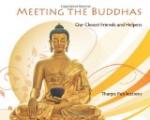There’s purring in a sunbeam
Where Tabby’s babies play.
The hen is softly brooding,
Her chickens came to-day.
Up in the crimson maple
The mother robin sings;
The world is full of caring
For little helpless things.
Mary
E. Wilkins.
From “Songs of Happy Life,” by permission
of publishers.
EARTHWORMS AND SNAKES.
The little earthworm, crawling across the garden path or burrowing its way into the loose soil, seems very common and insignificant, but it is a most useful servant to man.
Without the earthworms it would be difficult for us to live. It is by their help that grass grows for the cattle, and the garden yields food for our own use.
Long before any one thought of making a plough, the hard lumps of earth were broken up by the slender bodies of the earthworms. These worms have no eyes or feelers or feet, but they have, on each ring of their bodies, four pairs of bristles, which aid them in making their way through the earth.
Air is let into the soil through the holes that the worms make, and the moisture is drained away. Thus the roots of the plants are kept in good condition.
Worms are useful in another way. They can make poor soil into rich mould. This they do by swallowing earth and dried leaves.
After passing through the body of the worm, the earth is cast up in little heaps, which are soon scattered by the wind and rain. Hundreds of these “casts” may be seen in any large garden, and thus the whole surface is constantly changing.
In this way fields which were unfit for crops of any kind are made ready for the farmer’s use. In some places it has been found that ten tons of dry earth on every acre are made into good soil each year by the worms.
No gardener can prepare fine mould for plants so well as the worms can do it, and no farmer can so carefully make ready his fields.
There are some creatures which are commonly disliked and avoided because they are not attractive to look at. Often this is a mere prejudice against them, and careful study reveals a beauty not noticed before. There is a very general and absurd feeling against snakes which is the cause of much unnecessary suffering. This fear is so common that for many children and grown people a walk in the woods and fields loses half its pleasure.
Most of our common snakes are harmless and are useful in destroying insects. Instead of shuddering with horror at the little green snake, watch him as carefully as you can. Soon you will begin to wonder how he can go so fast, what he eats, and where he makes his home. You will find that he is not at all like the earthworm. He belongs to a very different class of animals, but he is as innocent as the worm of any wish to do you harm. He prefers to be left to himself in the long grass, but you may be sure if he should glide over your feet, or across your hand, he would not hurt you at all.




